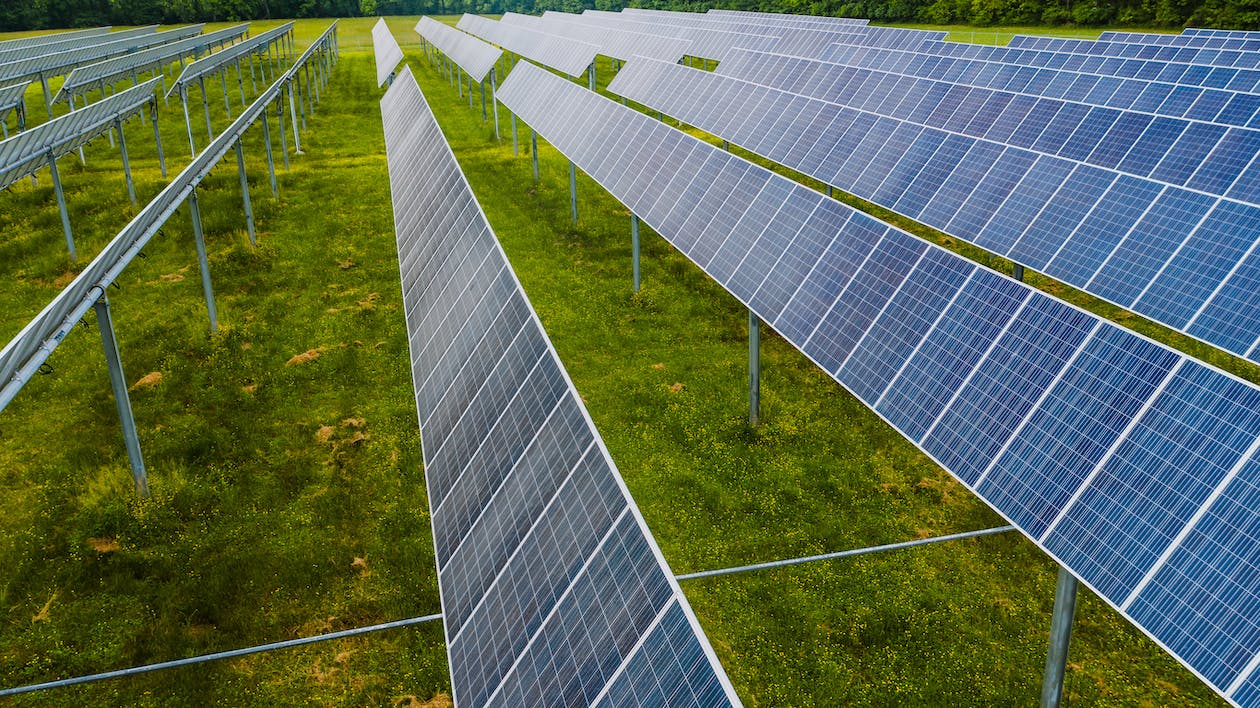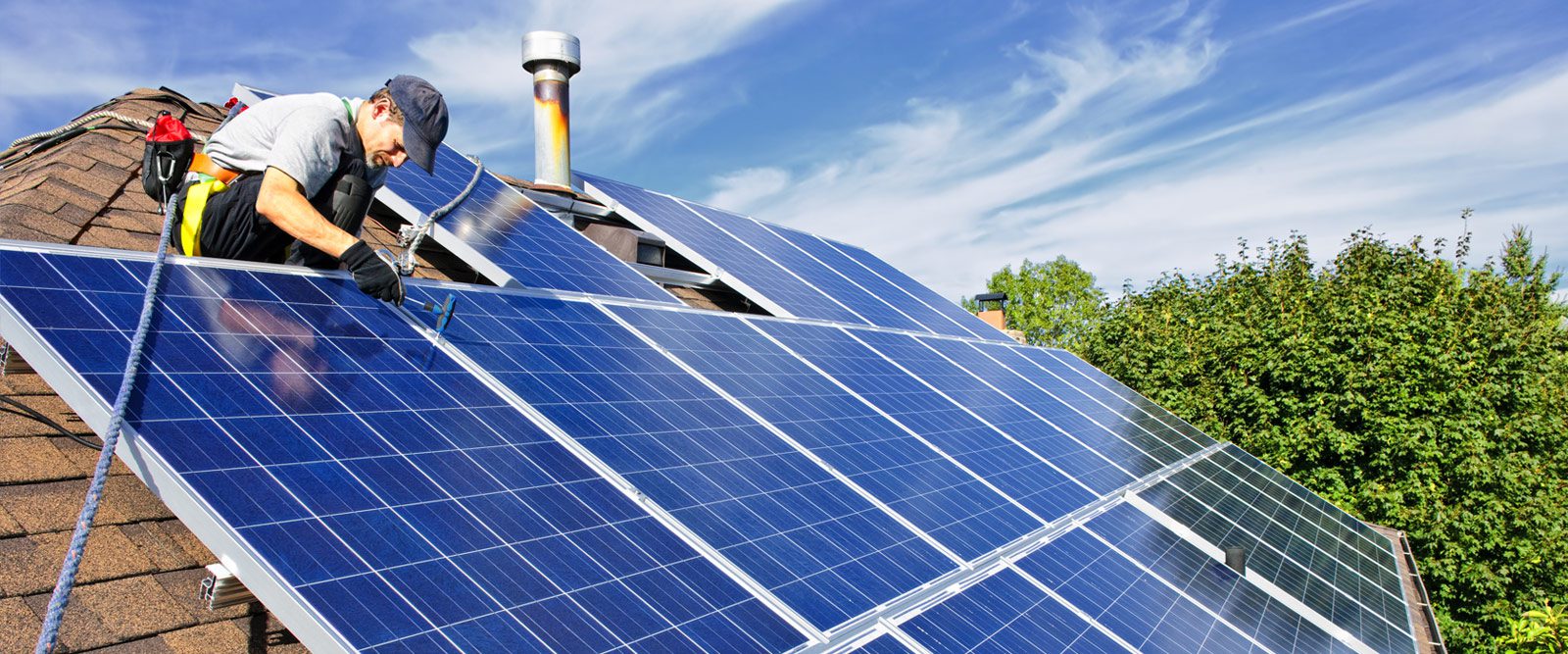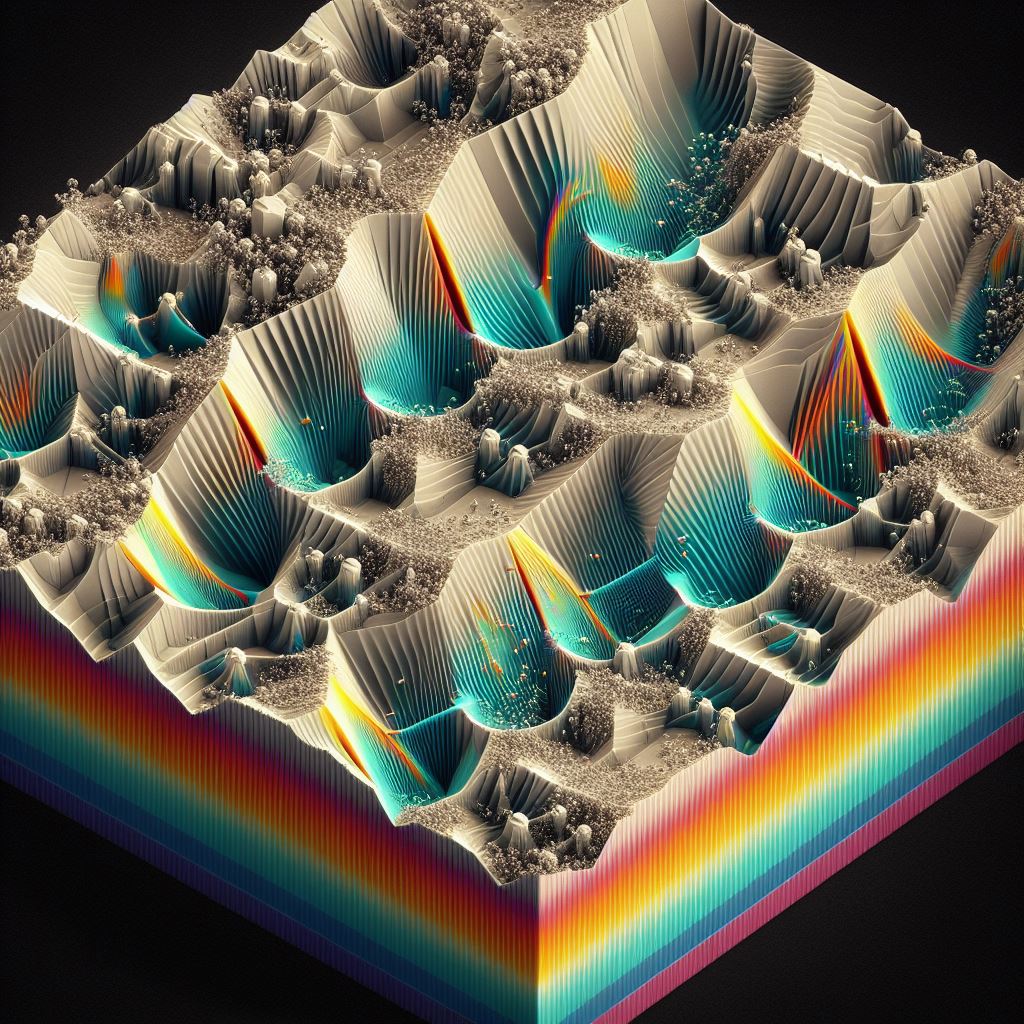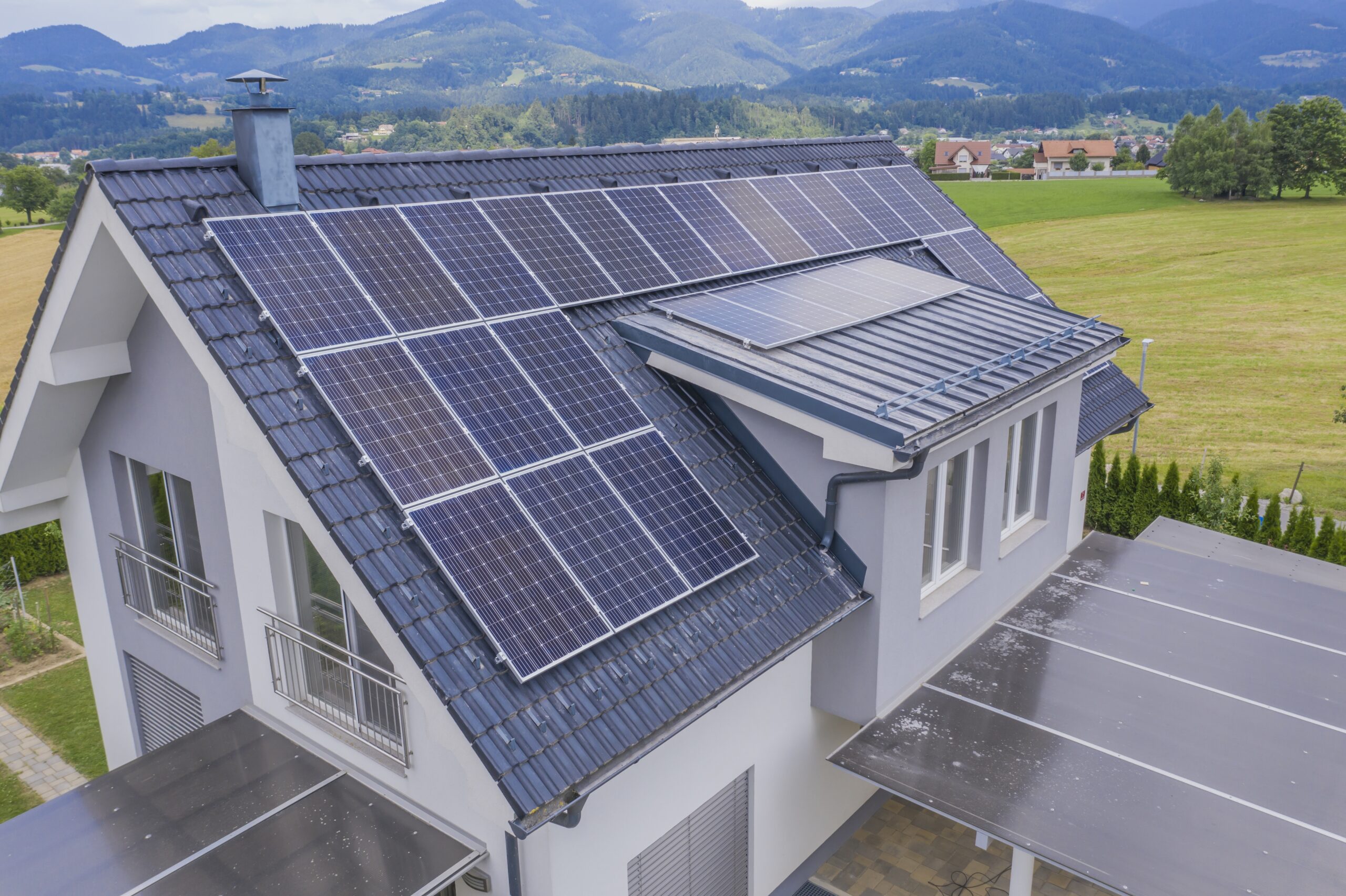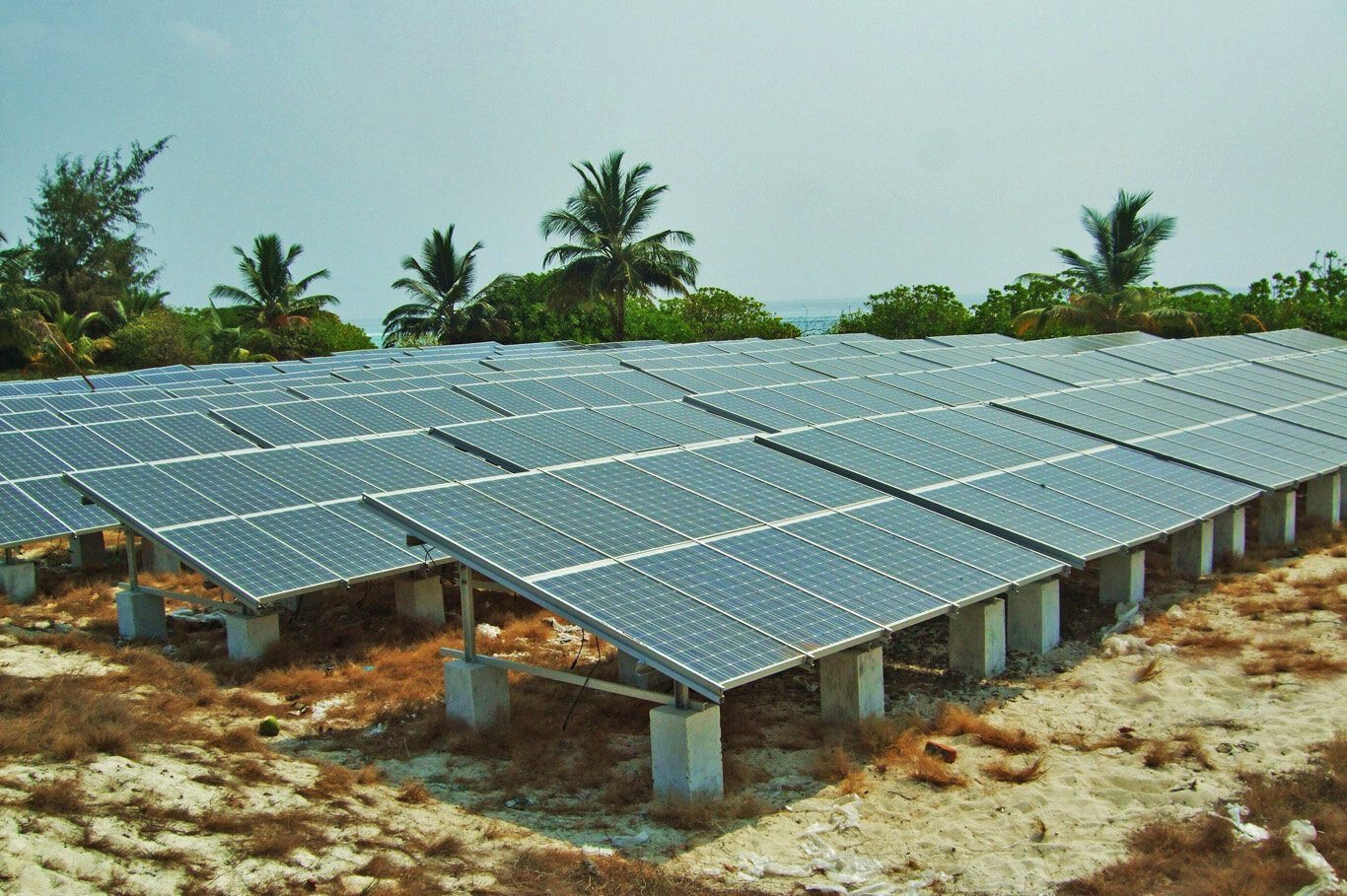Solar Panels and Energy has been a topic of great interest and importance in recent years, as the world looks for cleaner and more sustainable sources of energy. In this article, we will delve into the many aspects of solar energy, covering everything from the basics of how solar panels work to the latest developments in printable solar cells.
We will explore questions such as “are solar panels worth it?” and “do I need an inverter with solar panels?” and provide answers to help you understand the benefits and limitations of solar energy. We will also discuss the different types of solar panels, including mono and poly solar panels, and look at the various factors that influence their efficiency.
Additionally, we will touch on important topics such as the importance of solar panel cleaning and the role of solar sunflowers in optimizing the generation of electricity from photovoltaic panels. Finally, we will discuss the current state of the solar panel industry in India, including the best solar panel companies and the cost of installing a 3kw solar panel system for your home.
We selected these questions by surveying hundreds of people interested in these topics and most of these topics are repeated questions or doubts asked by the majority of people.
Whether you are a homeowner, a business owner, or simply interested in the future of energy, this article will provide a comprehensive overview of all about solar.
Solar panels work by converting sunlight into electricity. The basic component of a solar panel is a photovoltaic (PV) cell, which is made of semiconductor materials such as silicon.
When sunlight hits a PV cell, it causes the release of electrons from its atoms. This is known as the photovoltaic effect. The PV cell is designed to capture these electrons and convert them into a usable electrical current.
Multiple PV cells are connected together to form a solar panel, and several solar panels can be combined to create a solar array. The electrical current generated by the solar panel can be used immediately, stored in batteries for later use, or fed into the electrical grid for others to use.
Solar panels are made up of photovoltaic (PV) cells, which are the basic building blocks of a solar panel. The process of making a solar panel involves several steps:
1, Semiconductor Wafer Production: Solar panels are made from silicon, which is a common element found in sand. The first step in making a solar panel is to produce a semiconductor wafer, which is a thin slice of silicon crystal. This is done by growing a single crystal of silicon in a process known as the Czochralski process and then cutting the crystal into wafers.
2, Doping: The silicon wafers are then “doped” with small amounts of impurities, such as boron or phosphorus, to create a positive or negative charge. This process creates two types of silicon, one type with an excess of electrons (n-type) and one type with a shortage of electrons (p-type).
3, Cell Assembly: The doped silicon wafers are then cut into individual photovoltaic cells, which are then assembled into a solar panel. The cells are positioned so that the positive and negative sides face each other, creating a junction. When light strikes the surface of the cell, it causes the release of electrons, which flow through the circuit and create an electrical current.
4, Lamination: The assembled cells are then encapsulated between two layers of protective material, such as tempered glass or a clear polymer, to create a durable and weather-resistant panel.
5, Testing and Certification: After the solar panel has been assembled, it is tested to ensure that it meets industry standards for performance and safety. If the panel passes the tests, it is then certified and ready to be installed.
This is a basic overview of how solar panels are made. The exact process can vary depending on the manufacturer and the type of solar panel being produced, but these are the general steps involved in the production of a solar panel.
Whether or not solar panels are worth it depends on a variety of factors, including the cost of electricity in your area, the amount of sunlight your property receives, the cost of the solar panels and installation, and your energy consumption habits.
In general, solar panels can be a worthwhile investment if you have high electricity bills and a good amount of sunlight exposure. By generating your own electricity, you can potentially reduce or even eliminate your monthly electricity bill and save money over the long term. Additionally, solar panels can increase the value of your property and provide a sense of energy independence.
However, it’s important to keep in mind that the upfront cost of solar panels and installation can be substantial. It’s also important to consider factors such as the age and condition of your roof, as well as local zoning laws and regulations, which may impact your ability to install solar panels.
To determine if solar panels are worth it for your specific situation, it’s best to consult with a professional solar installer who can perform a site assessment and provide you with a customized proposal. They can help you estimate the potential savings and payback period, as well as help you navigate any local regulations or requirements.
Solar panel optimizers are electronic devices that are installed at the module level to maximize the performance of each individual solar panel in a solar array. The optimizers monitor the performance of each panel and adjust the voltage to ensure that the panel is operating at its maximum efficiency.
Whether or not solar panel optimizers are worth it depends on a variety of factors, such as the size and orientation of your solar array, the shading conditions of your property, and the type of inverter that you are using.
In general, solar panel optimizers can be a worthwhile investment if you have shading issues or other factors that can impact the performance of your solar panels. By maximizing the performance of each individual panel, optimizers can help ensure that your solar system is generating as much electricity as possible, which can increase your overall energy production and financial savings.
However, it’s important to keep in mind that solar panel optimizers can add to the upfront cost of your solar installation, and they may not be necessary for all systems. It’s also important to consider the type of inverter that you are using, as some inverters may already include features that optimize the performance of your panels.
The cost of solar panels has been decreasing in recent years, and it is likely that this trend will continue in the future. This is due to a combination of factors, including advances in technology, increased production and competition, and government incentives and subsidies.
In the past decade, the cost of solar panels has fallen by more than 80%, making them more accessible and affordable for homeowners and businesses. As the solar industry continues to grow and mature, it is expected that costs will continue to decline, making solar an even more attractive option for those looking to reduce their energy costs and help the environment.
However, it’s important to keep in mind that the cost of solar panels is influenced by a variety of factors, including the price of raw materials, the cost of labor, and the cost of financing. Economic conditions, such as changes in interest rates and inflation, can also impact the cost of solar panels.
While it’s difficult to predict exactly how much the cost of solar panels will decline in the future, it is widely expected that the cost will continue to decrease, making solar an increasingly accessible and affordable source of clean energy.
Yes, solar panels are recyclable. Solar panels contain a variety of materials, including glass, aluminum, and silicon, which can be recycled and used to make new solar panels or other products. The recycling process helps to conserve valuable resources, reduce waste, and minimize the environmental impact of solar panel production.
However, the recycling of solar panels is still in its early stages and the infrastructure for recycling solar panels is not yet widely available in many areas. As the demand for recycling services grows, it is expected that the infrastructure for recycling solar panels will also improve and become more widely available.
If you are considering purchasing solar panels for your home or business, it’s a good idea to research the recycling options available in your area and choose a company that offers a take-back program for their panels. This will help to ensure that your panels are properly recycled at the end of their life, reducing their environmental impact and conserving valuable resources.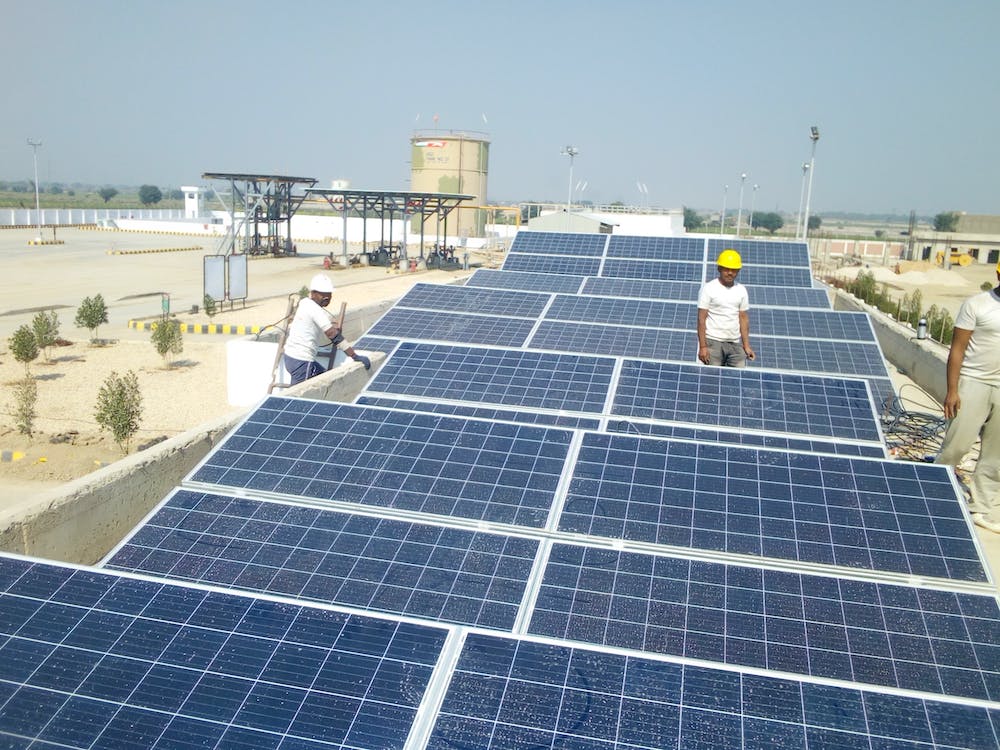
The concept of using the sun’s energy to generate electricity dates back to the 19th century, but the first practical solar cells were developed in the 1950s. The invention of the solar cell is often credited to Bell Labs in 1954, where researchers discovered that silicon, when combined with certain impurities, could produce an electric current when exposed to sunlight.
This discovery marked the beginning of the modern solar industry, and since then, solar technology has continued to evolve and improve, making solar energy increasingly accessible and affordable for homeowners and businesses.
Today, solar energy is widely used as a clean, renewable source of electricity, and the solar industry is one of the fastest-growing industries in the world, providing jobs, reducing greenhouse gas emissions, and helping to mitigate climate change.
Solar panels are most efficient at converting sunlight into electricity when they receive direct sunlight, without any shading or obstructions. This typically occurs in the middle of the day, when the sun is at its highest point in the sky.
In general, solar panels are most efficient in the late morning and early afternoon, when the sun is shining directly on the panels. The efficiency of the panels will decline as the sun begins to set and the angle of the sun’s rays changes.
It’s also important to note that the temperature of the panels can affect their efficiency. High temperatures can cause the panels to become less efficient, so it’s important to choose panels that are designed to operate effectively in hot climates.
There are several reasons why the efficiency of solar panels may be low, including:
1, Shading or Obstructions: If a portion of a solar panel is shaded by trees, buildings, or other objects, it can greatly reduce the efficiency of the entire panel.
2, Poor Installation Angle: Solar panels are designed to receive direct sunlight, so it’s important to install them at the proper angle to maximize their exposure to the sun. If the panels are not installed at the optimal angle, their efficiency will be reduced.
3, Dirt and Debris: Dirt, dust, and other debris can accumulate on the surface of the solar panels, reducing their ability to receive and convert sunlight into electricity. Regular cleaning can help to keep the panels functioning at their highest efficiency
4, Panel Age: Over time, the efficiency of solar panels can decline as they age. The rate at which this occurs depends on the quality of the panels, the environment they are exposed to, and other factors.
5, Poor Quality Panels: Some solar panels are made with lower-quality materials or components that are less efficient at converting sunlight into electricity. Choosing high-quality, reputable solar panels can help to ensure that your panels are functioning at their highest efficiency.
By addressing these factors and choosing high-quality solar panels, you can help to maximize the efficiency of your solar energy system and ensure that you are getting the most value from your investment.
Cleaning your solar panels is important for several reasons:
1, Increased Efficiency: Dirt, dust, and other debris can accumulate on the surface of the solar panels, reducing their ability to receive and convert sunlight into electricity. Regular cleaning can help to remove this buildup, improving the efficiency of the panels and ensuring that they are functioning at their highest capacity.
2, Improved Performance: Over time, dirt and debris can cause a build-up of heat and moisture within the panels, which can negatively affect their performance. By cleaning the panels regularly, you can help to prevent this build-up and improve the overall performance of your solar energy system.
3, Extended Life Span: Dirt and debris can cause abrasions and other damage to the surface of the solar panels, which can reduce their lifespan. By cleaning the panels regularly, you can help to minimize this damage and extend the life of your solar energy system.
4, Improved Aesthetics: Clean solar panels look better and can enhance the appearance of your home or business. Keeping your panels clean also demonstrates that you take pride in your investment and care about the environment.
Overall, cleaning your solar panels is an important part of maintaining the efficiency and performance of your solar energy system. Depending on the location of your panels and the amount of debris they receive, they may need to be cleaned several times a year.
The blue color of solar panels is due to the materials used in their construction. Most modern solar panels are made from silicon, which is a naturally occurring element that is abundant in the Earth’s crust. When silicon is purified and processed into a single crystal form, it becomes a material known as monocrystalline silicon.
Monocrystalline silicon is dark blue in color, and this is the material that is most commonly used in the production of solar cells. This is because monocrystalline silicon is highly efficient at converting sunlight into electricity, making it ideal for use in solar panels.
The blue color of the solar cells is due to the presence of silicon in its pure form, and this color serves as a visual indicator that the solar cells are made from high-quality, efficient materials.
Solar panels can work through glass, but the efficiency of the panels will be reduced. Glass, particularly tinted or low-E glass, can reduce the amount of sunlight that reaches the solar panels, decreasing their ability to generate electricity. Additionally, glass can also cause reflections and glare that can further reduce the efficiency of the panels.
It is important to note that the amount of reduction in efficiency will depend on the type and thickness of the glass, as well as other factors such as the angle of the sun and the location of the panels.
Solar panels will not work as efficiently in the shade as they do in full sunlight. This is because the performance of a solar panel is directly related to the amount of sunlight it receives. When a solar panel is partially or fully shaded, the amount of light that reaches the photovoltaic cells is reduced, resulting in a decrease in the amount of electricity that can be generated.
In fact, even a small amount of shading can have a significant impact on the performance of a solar panel. When a portion of a solar panel is shaded, the voltage of that portion is reduced, causing the entire panel to operate at a lower voltage. This, in turn, reduces the overall efficiency of the panel and the amount of electricity it generates.
For this reason, it is important to carefully consider the shading conditions of a solar panel system when designing and installing the panels. If you have trees or other structures that may cause shading, you may need to trim or remove them or adjust the orientation and tilt of the panels to ensure that they receive as much direct sunlight as possible.
Solar panels do not work at night because they rely on sunlight to generate electricity. When the sun sets and there is no sunlight available, the solar panels will not be able to produce any electricity.
However, homes and businesses with solar panels often have battery systems or are connected to the grid, which allows them to store excess electricity generated during the day and use it at night. In these cases, when the sun is not shining, electricity can be drawn from the battery or the grid to power the home or business.
It is also worth noting that there are some emerging technologies, such as solar panels that use a combination of sunlight and artificial light to generate electricity, but these are not yet widely available and are still in the early stages of development.
The best solar panel for a home in India will depend on several factors, including the local climate, roof orientation and size, electricity usage, and budget.
In general, high-efficiency solar panels are considered the best for a home in India, as they can generate more electricity per square meter compared to low-efficiency panels. Some of the most popular high-efficiency solar panels for homes in India include monocrystalline and polycrystalline panels, which are known for their high conversion rates and durability.
Another important factor to consider is the warranty offered by the manufacturer. A good warranty can provide peace of mind and protection against potential issues, such as reduced efficiency or panel failure.
It is also important to consider the reputation and reliability of the manufacturer and their customer service, as well as the availability of local support and service.
Finally, the cost of the solar panel system is another important factor to consider. While more expensive solar panels may be of higher quality, it is also important to find a balance between cost and quality to ensure that the solar panel system fits within your budget and meets your needs.
There is no single best solar panel company in India, as the best company for you will depend on a variety of factors, including your specific needs, budget, and local climate conditions.
However, some of the most well-known and reputable solar panel companies in India include
-Vikram Solar
-Tata Power Solar Systems
-Canadian Solar
-JinkoSolar
-Yingli Solar
These companies are known for their high-quality products and services and have a strong presence in the Indian solar energy market. They offer a range of solar panel products and services to meet the needs of homeowners and businesses, including residential and commercial solar panel systems, solar pumps, and solar street lighting.
In addition to the above companies, there are also many local and regional solar panel companies in India that offer high-quality products and services.
When choosing a solar panel company in India, it is important to consider factors such as the company’s reputation, product quality, warranty, customer service, and local support. You may also want to consider the company’s experience and expertise in the Indian solar energy market, as well as its ability to provide customized solutions that meet your specific needs.
Both monocrystalline and polycrystalline solar panels have their own unique advantages and disadvantages. Which one is best for you will depend on your specific needs and requirements.
Monocrystalline solar panels are made from a single, high-purity silicon crystal and are known for their high efficiency, long lifespan, and sleek, black appearance. They typically have higher conversion rates and can produce more electricity per square meter compared to polycrystalline panels, making them a good choice for homes and businesses with limited roof space. They are also more expensive compared to polycrystalline panels.
Polycrystalline solar panels, on the other hand, are made from multiple silicon crystals and are known for their lower cost, lower efficiency, and blue appearance. While they are less efficient compared to monocrystalline panels, they can still generate significant amounts of electricity and are a good choice for homes and businesses with larger roof spaces or lower electricity requirements.
The solar panel with the highest efficiency changes over time as new technology is developed and manufacturers continue to improve their products.
The solar panel with the highest efficiency is the SunPower Maxeon 6, 440W, which has a conversion efficiency of 22.8%. This means that it is able to convert 22.8% of the sunlight that it receives into usable electricity. LG Monocrystalline has 22.30 efficiency.
However, it is important to note that a solar panel’s efficiency is not the only factor to consider when choosing a solar panel. Other factors, such as cost, durability, and warranty, should also be taken into account.
-SunPower Maxeon 6 440 W 22.8 % Efficiency
-Longi Solar Hi-Mo 6 Scientist 440W 22.8 % Efficiency
-Canadian Solar CS6R-H-AG 440 W 22.5 % Efficiency
-REC Alpha Pure R 430 W 22.3 % Efficiency
-SPIC Andromeda 2.0 440 W 22.3 % Efficiency
-Qcells Q.Tron-G1+ 400 W 22.3 % Efficiency
-LG Monocrystalline 22.30% Efficiency
-Maxeon Monocrystalline 22.80% Efficiency
-Silfab Monocrystalline 21.40% Efficiency
-Panasonic Monocrystalline 21.70% Efficiency
Yes, it is possible to charge an electric car battery using a solar panel. This can be a convenient way to keep a car battery charged, especially in remote locations or when grid power is not available.
To charge a car battery with a solar panel, you will need a solar panel, a charge controller, and a battery. The solar panel will generate electricity, which will be passed through the charge controller to regulate the voltage and prevent overcharging. The regulated voltage will then be used to charge the car battery.
It is important to choose a solar panel with enough power to charge the car battery in a reasonable amount of time, based on the battery’s capacity and your daily solar availability. A charge controller with a low voltage disconnect function is also important to protect the battery from over-discharging, which can damage the battery and reduce its lifespan.
The cost of a 3 kW solar panel system for a home in India can vary depending on several factors, such as the type and brand of the panels, the location of the installation, and the complexity of the installation process. The average cost of a 3 kW solar panel system in India was between INR 1.5 lakhs to INR 3 lakhs.
It is important to keep in mind that this is just an estimate and the actual cost of a 3 kW solar panel system for a home in India may be higher or lower depending on the specific circumstances of each case.
Yes, an inverter is typically required with solar panels. Solar panels generate direct current (DC) electricity, which cannot be used directly by most household appliances and devices that require alternating current (AC) electricity. An inverter is used to convert the DC electricity generated by the solar panels into AC electricity that can be used by household appliances and devices.
The inverter also acts as a central control system for the solar panel system, managing the flow of electricity from the panels to the battery bank and the grid, if the system is connected to one. Some inverters also have built-in monitoring systems that can provide information on the performance of the solar panel system, such as the amount of electricity generated and the battery’s state of charge.
The terms “photovoltaic panels” and “solar panels” are often used interchangeably to refer to the same type of technology. Photovoltaic panels and solar panels both refer to devices that convert sunlight into electricity using photovoltaic (PV) cells.
In essence, photovoltaic panels and solar panels are the same things. The term “photovoltaic panels” is often used to describe the individual cells or modules that make up a solar panel system, while the term “solar panels” is used to describe the entire system of multiple photovoltaic panels that are connected together to generate electricity.
A photovoltaic (PV) panel and a PV module are both components of a solar energy system, but they refer to different things.
A PV panel is a single unit of photovoltaic cells that are used to generate electricity from sunlight. A single PV panel is typically made up of several photovoltaic cells connected in series or parallel and can range in size from a few square inches to several square feet.
A PV module, on the other hand, is a complete, ready-to-install photovoltaic system that includes multiple PV panels and other components, such as an inverter, a battery bank, and a charge controller (for off-grid systems). A PV module is designed to be a complete, turnkey solution for generating electricity from sunlight.
A solar sunflower is a type of solar energy system that uses a rotating platform to track the sun’s movement and optimize the generation of electricity from photovoltaic panels.
A solar sunflower typically consists of a rotating platform, a base, and one or more photovoltaic panels mounted on the platform. The platform is equipped with a motor that rotates the entire system to follow the sun’s movement across the sky, ensuring that the panels are always facing the sun and generating the maximum amount of electricity possible.
Solar sunflowers are designed to be both aesthetically pleasing and functional and are often used in commercial and residential settings to generate electricity from sunlight. They are also designed to be highly efficient, maximizing the amount of electricity generated from a given area of solar panels.
Printable solar cells are a type of photovoltaic technology that uses printing techniques to produce solar cells. They are made by depositing thin films of photovoltaic materials onto a substrate, such as plastic or metal, using techniques such as screen printing, inkjet printing, or roll-to-roll printing.
Printable solar cells are a promising technology because they have the potential to be produced much more efficiently and at a lower cost than traditional photovoltaic cells. They also have the advantage of being flexible, which opens up new possibilities for the design and integration of photovoltaic systems in a variety of applications.
Despite these advantages, printable solar cells are still in the early stages of development and have lower efficiency compared to traditional photovoltaic cells. However, researchers and companies are continuously working to improve the efficiency of printable solar cells, and it is expected that they will play an increasingly important role in the future of solar energy.


